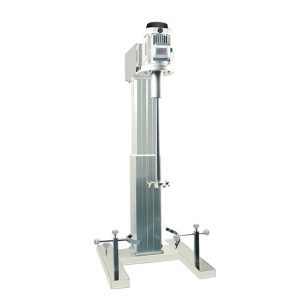What are the key technical parameters of the disperser?
The key parameters of the disperser include the following aspects:
Power: The power of a disperser refers to the power provided by a driving device (such as a motor), usually in kilowatts (kW). The size of power will affect the driving ability and dispersion effect of the disperser. Under normal circumstances, the greater the power is, the stronger the driving ability of the disperser is, and it can deal with materials with higher viscosity.
Speed: The speed of the disperser refers to the rotation speed of the disperser plate or agitator, usually in revolutions per minute (rpm). The choice of speed will affect the dispersion effect and shear force of the disperser. Higher rotational speed can produce greater shear force and tangential velocity, which is conducive to effective dispersion of solid particles or mixtures, but excessive rotational speed may lead to excessive shear and damage to the material.
Dispersing disc diameter: The diameter of the dispersing disc is also an important parameter, which determines the amount of material handled by the dispersing machine and the dispersing effect. Larger disperser disk diameters can usually handle more material, but also require more power to actuate.
Dispersion time: Dispersion time refers to the time that the material is dispersed in the disperser, usually in minutes. The appropriate dispersion time depends on the nature of the material and the degree of dispersion required, and needs to be adjusted according to the specific situation.
Dispersing medium: A dispersing medium is a liquid medium used in the dispersing process, such as water, solvents or other additives. Choosing the right dispersion medium can improve the dispersion effect and stability.

The selection and adjustment of these parameters need to be considered comprehensively according to the specific material properties, dispersion requirements and process conditions to obtain the best dispersion effect.
